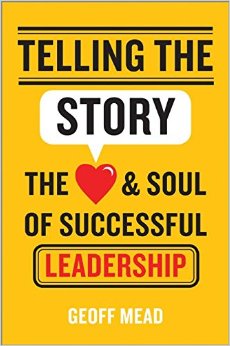There are two dimensions of the particular challenges that top leaders face in building engagement among staff, stakeholders and customers to which narrative and storytelling techniques can make a significant contribution: inclusion (a sense of belonging) and inspiration (a sense of common purpose). Both are required and they call for different and complementary approaches.
Stories are the primary way we make sense of our experience and find significance and meaning in the world. The stories we tell and the stories we listen to are fateful. The power of stories lies in their ability to touch the imagination and feelings of listeners. Good written communication is essential but it is no substitute for face-to-face contact.
The way storytelling and narrative techniques make a positive difference is founded on some underlying principles and beliefs:
- Building lasting engagement can only be done through an engaging process. It cannot be finessed by sleight of hand or foisted on people.
- It requires a continuing two-way process in which people have open dialogue, telling their own and listening to each other’s stories.
- At its best, it both calls for and develops courageous and authentic leadership at all levels of the organisation – not just at the top.
- Good engagement is built upon collaborative and supportive partnerships across the organisations – not by solitary heroic ‘stand-ups’.
- The aim is to create and foster a healthy ecology of stories that continually develops and evolves rather than a single grand vision statement.
- We need to tell down-to-earth stories that both acknowledge the difficulties and bring out the best in us – not sanitised ‘victory narratives’
Inclusion: developing a sense of belonging
Paradoxically, developing a shared sense of belonging to the NHS community (in its widest sense) can only happen when people believe that they are allowed to bring what is most precious to them from their existing communities and cultures. People need to have the opportunity to share their stories with each other across hierarchies, groups and cultures and to have them valued. Only then will they be open to inspiring visions of the future.
One way of sharing such stories is a facilitated technique called Story Circles. They enable people to share their stories face-to-face with each other in a way that rapidly develops a strong sense of acceptance and builds community. This process is very time efficient and can be done with many small groups at the same time. Here is a real life example of one such deceptively simple intervention.
The Story Circle technique was used with members of a fast-track management training scheme in a large aerospace company. They told stories of mentors in the company who had helped them, of inspired school teachers who had encouraged them to become engineers, of following in the footsteps of parents and grandparents, of breaking the mould to become the first person in their families to go to university, of being one of relatively few women engineers in the company, stories of their hopes, doubts, fears and gratitude for the opportunities they had been given.
Some were ‘natural’ storytellers, some artful, others artless but all had a story to tell and all were heard by their colleagues with rapt attention. Afterwards, one of them said in tones that suggested a sense of wonder; “We really opened up to each other didn’t we? We all work in the same business and we have been together on this training scheme for two years but I look round the room now and for the first time I feel that I actually know these people and that they know me.”
Inspiration: developing a sense of common purpose
The idea that leaders need to be able to tell a good story to inspire staff and create a sense of common purpose has become fashionable. However the wrong story – or even the right story at the wrong time – can backfire. It is crucial not just to be able to tell a story well but also to know what story is appropriate for the teller, the audience and the organisational context.
At Narrative Leadership Associates, we have vast experience of coaching individual leaders and leadership teams in the inspirational use of story and narrative. We have also (in conjunction with Ashridge Consulting) developed Strategic Storytelling – a framework drawing on the principles of complexity theory to guide the selection and use of stories appropriate for the systemic context in which an organisation is working.
 Different circumstances call for different characters and stories: the charismatic Hero(ine) inspiring people with clarity of purpose; the wily Explorer exuding confidence in unknown territory; the bold and influential Politician framing the debate; the creative Visionary dreaming the future into being; the expert Navigator able to show that they know what needs doing and how to do it.
Different circumstances call for different characters and stories: the charismatic Hero(ine) inspiring people with clarity of purpose; the wily Explorer exuding confidence in unknown territory; the bold and influential Politician framing the debate; the creative Visionary dreaming the future into being; the expert Navigator able to show that they know what needs doing and how to do it.
How can you find and tell authentic stories coming from personal experience that carry weight and the ‘ring of truth’; stories that will help you claim your personal authority; stories that will inspire and engage people in service of worthwhile ends?
Copyright Geoff Mead 2011

